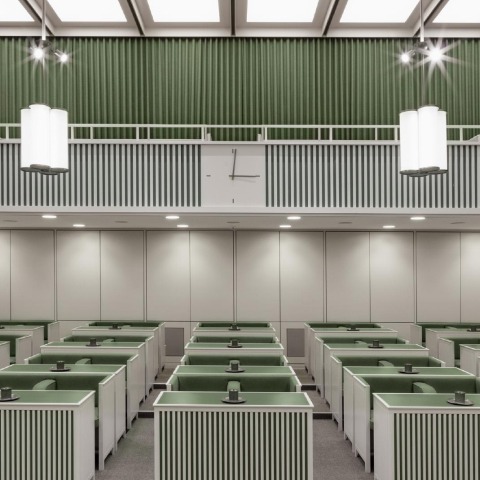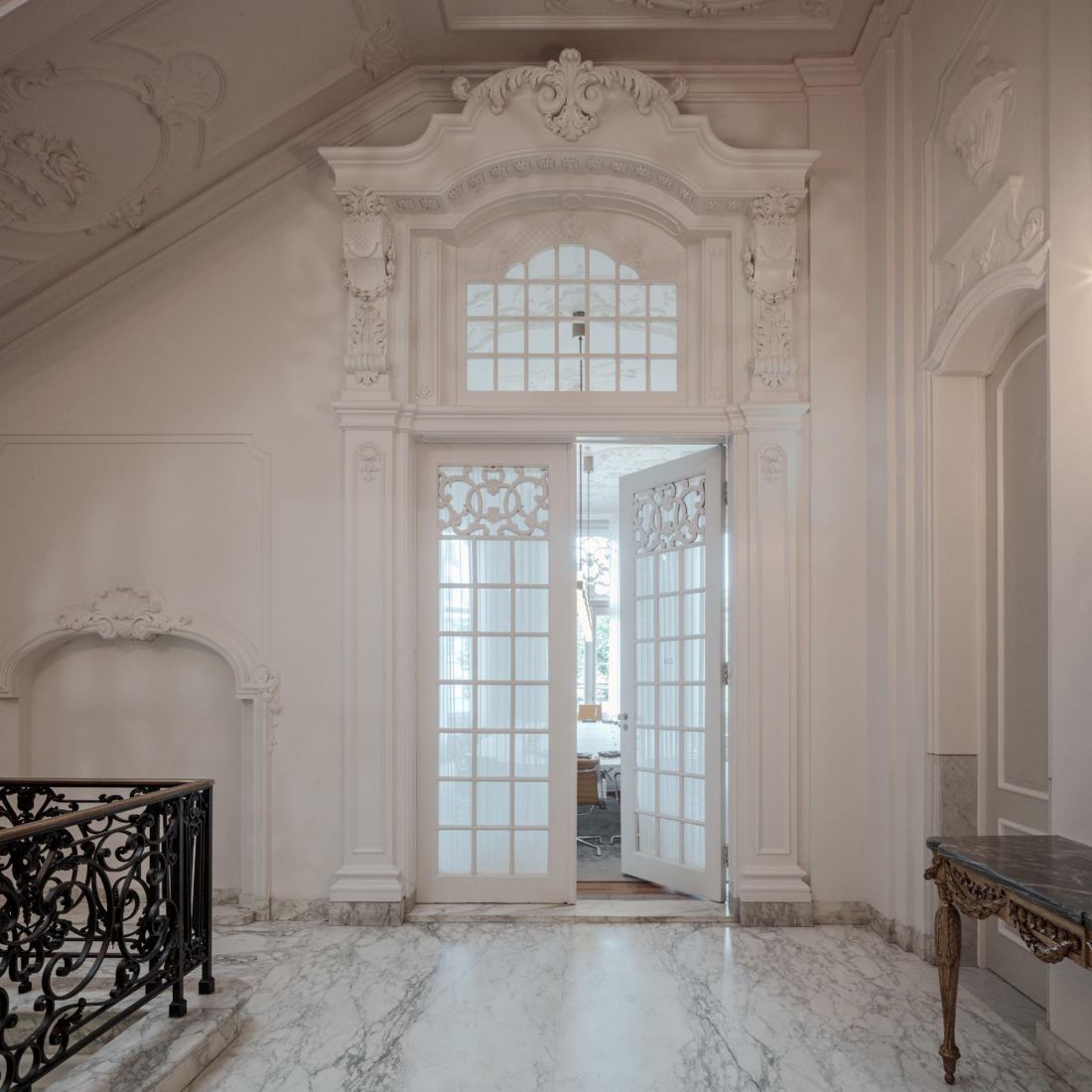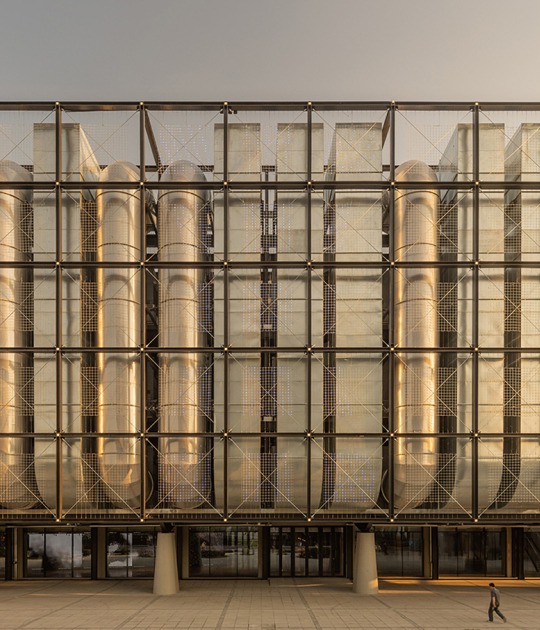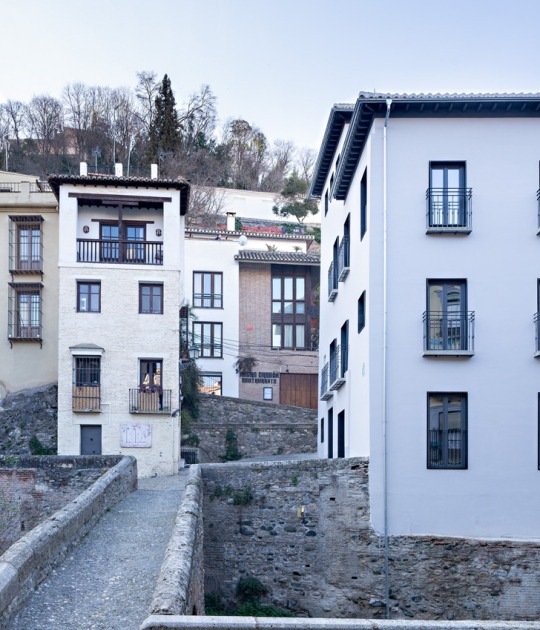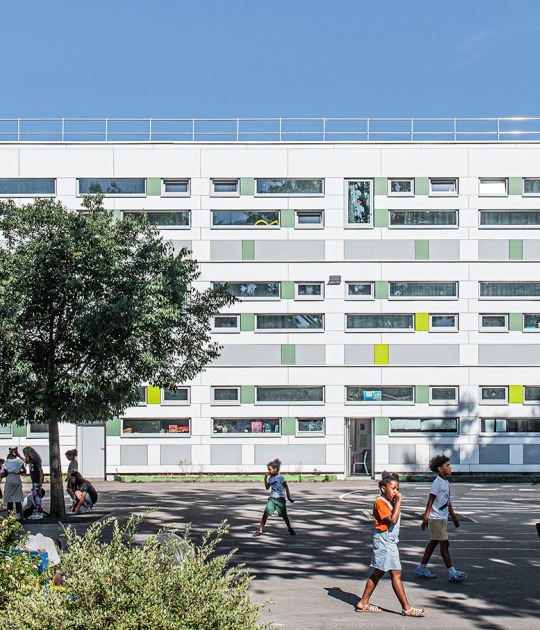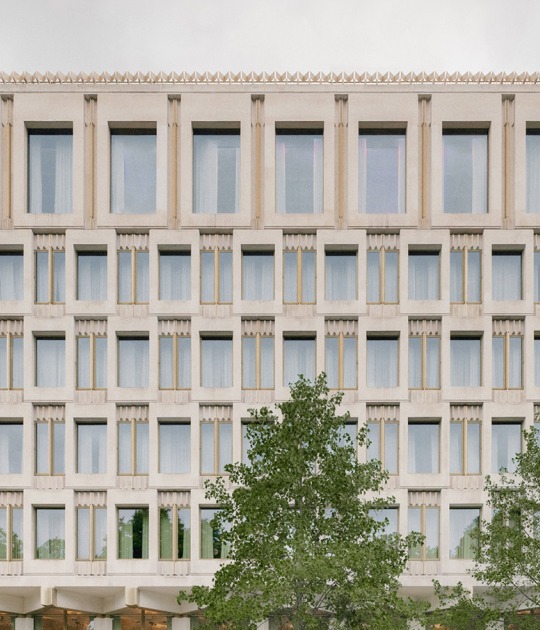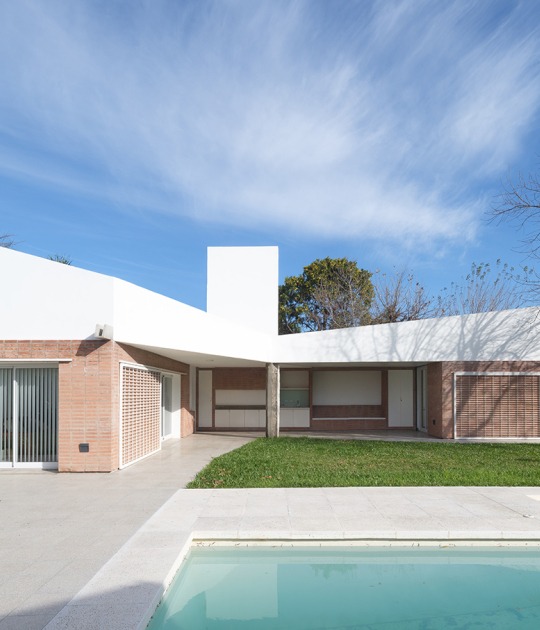In fact, the reform is actually a new "cladding", which allows all the architectural structure of the pieces to be fully maintained. Inside, new floors, walls, and ceilings have been built, which will allow them to be easily eliminated again in five or six years, while at the same time creating new interstitial spaces that are necessary to hide a large number of the new technical installations.
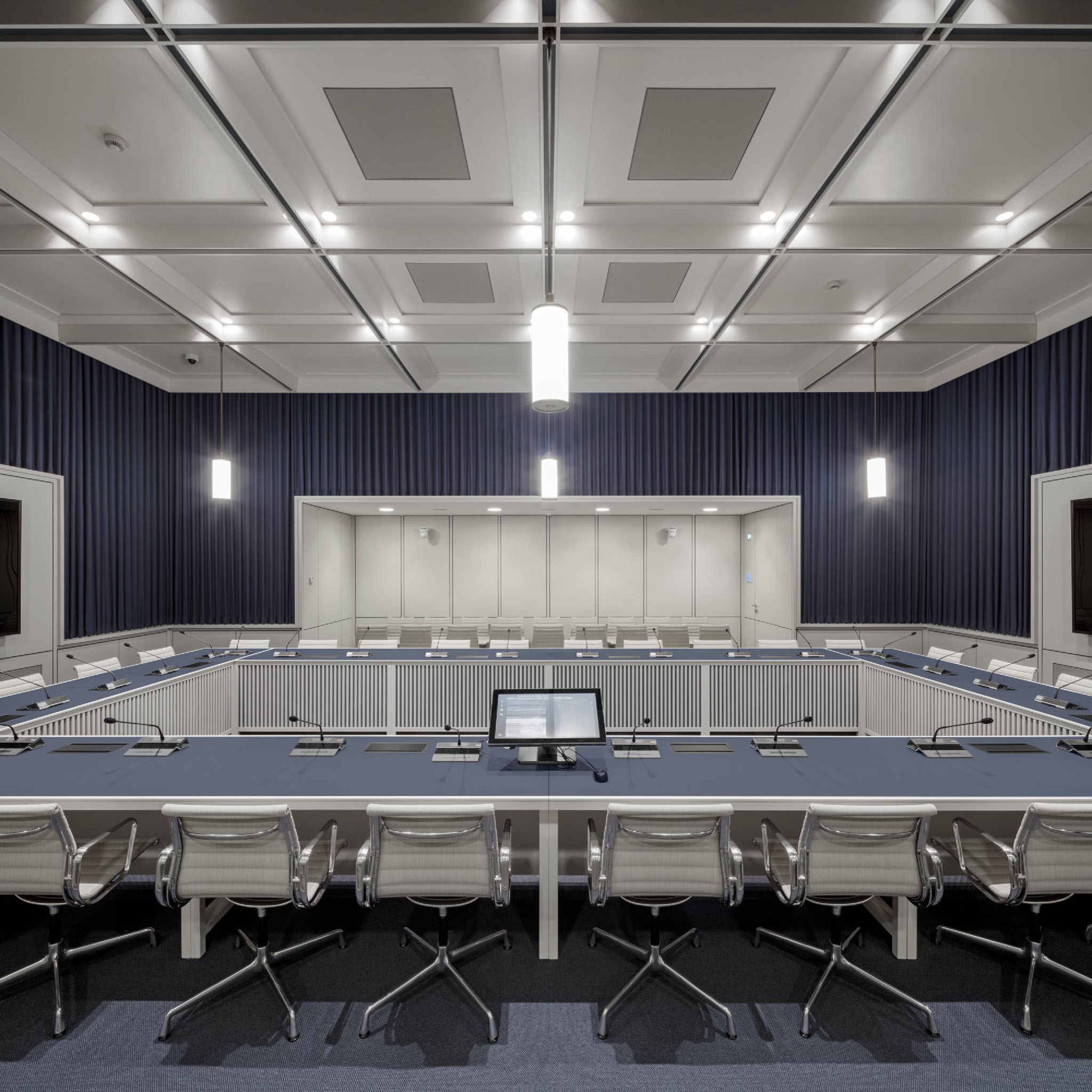
Dutch Upper House and Council of State by Happel Cornelisse Verhoeven. Photograph by Karin Borghouts.
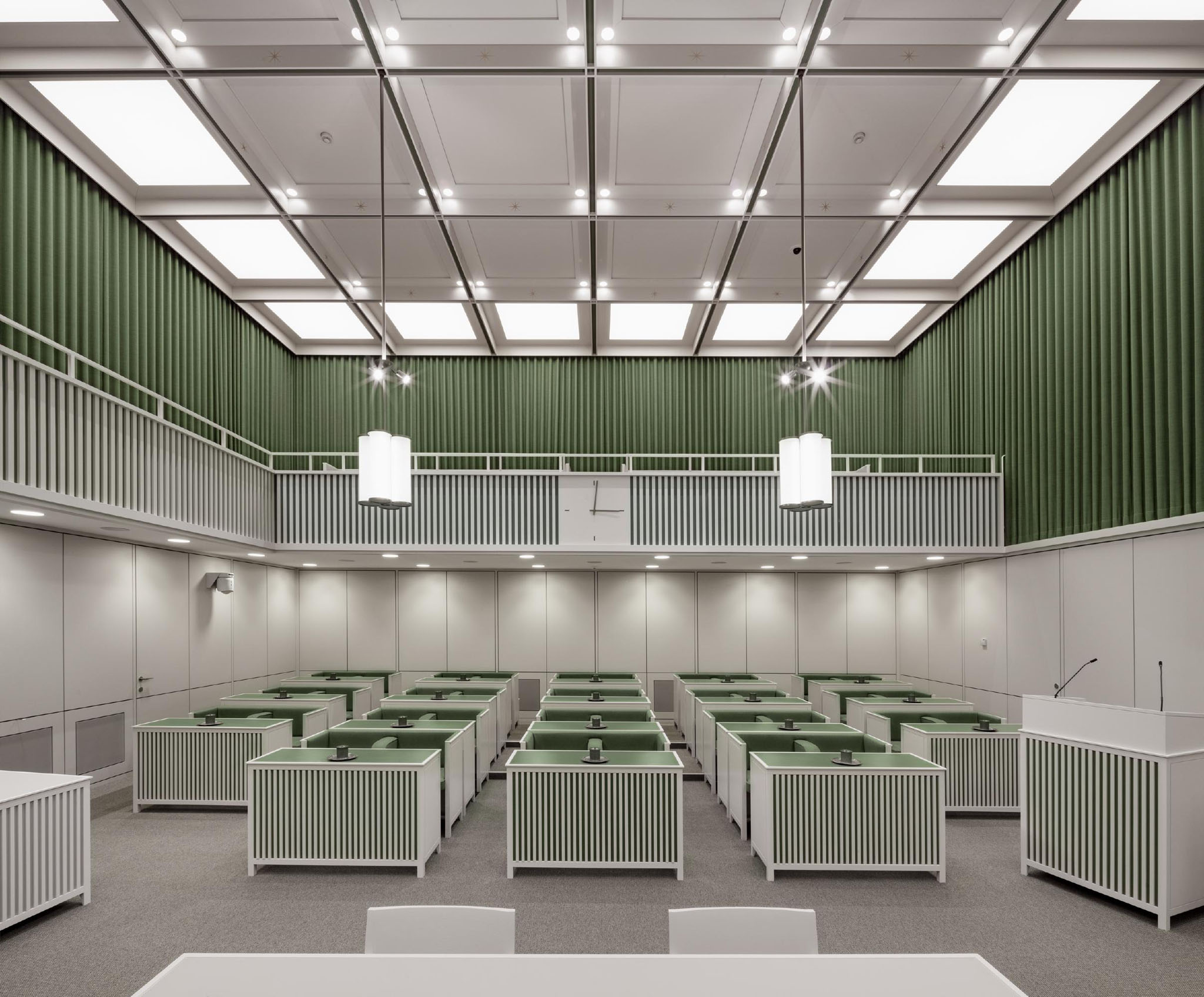
Project description by Happel Cornelisse Verhoeven Architecten
For the duration of the comprehensive renovation of the Binnenhof (the seat of the Dutch parliament), the Upper House and the Council of State have relocated to a new "home". Both institutions have taken up residence in "Huis Huguetan", a heritage-listed mansion on Lange Voorhout, and a 1980s extension of the former Supreme Court building to its rear on Kazernestraat. In preparation for this rehousing the two buildings were technically upgraded in terms of acoustics, air conditioning, audiovisual technology, ICT, fire safety and personal security. To soften the stark contrast between the two buildings, the new interior design was geared toward turning all the public and ceremonial spaces into a harmonious and dignified whole.
Designed in 1734 by Daniel Marot, Huis Huguetan includes a series of eighteenth-century, rococo-style period rooms, which have been made suitable for the executive committee, official receptions and parliamentary party rooms. The white-grey tone of the decorated stucco ceilings, wainscoting, door jambs and mantelpieces has been strengthened and now forms the general backdrop against which new additions such as floor and wall coverings, furniture and fittings stand out. The garden room, which occupies a prominent position on the main floor, is used by the Council of State and for ceremonial receptions and state visits by the Upper House.
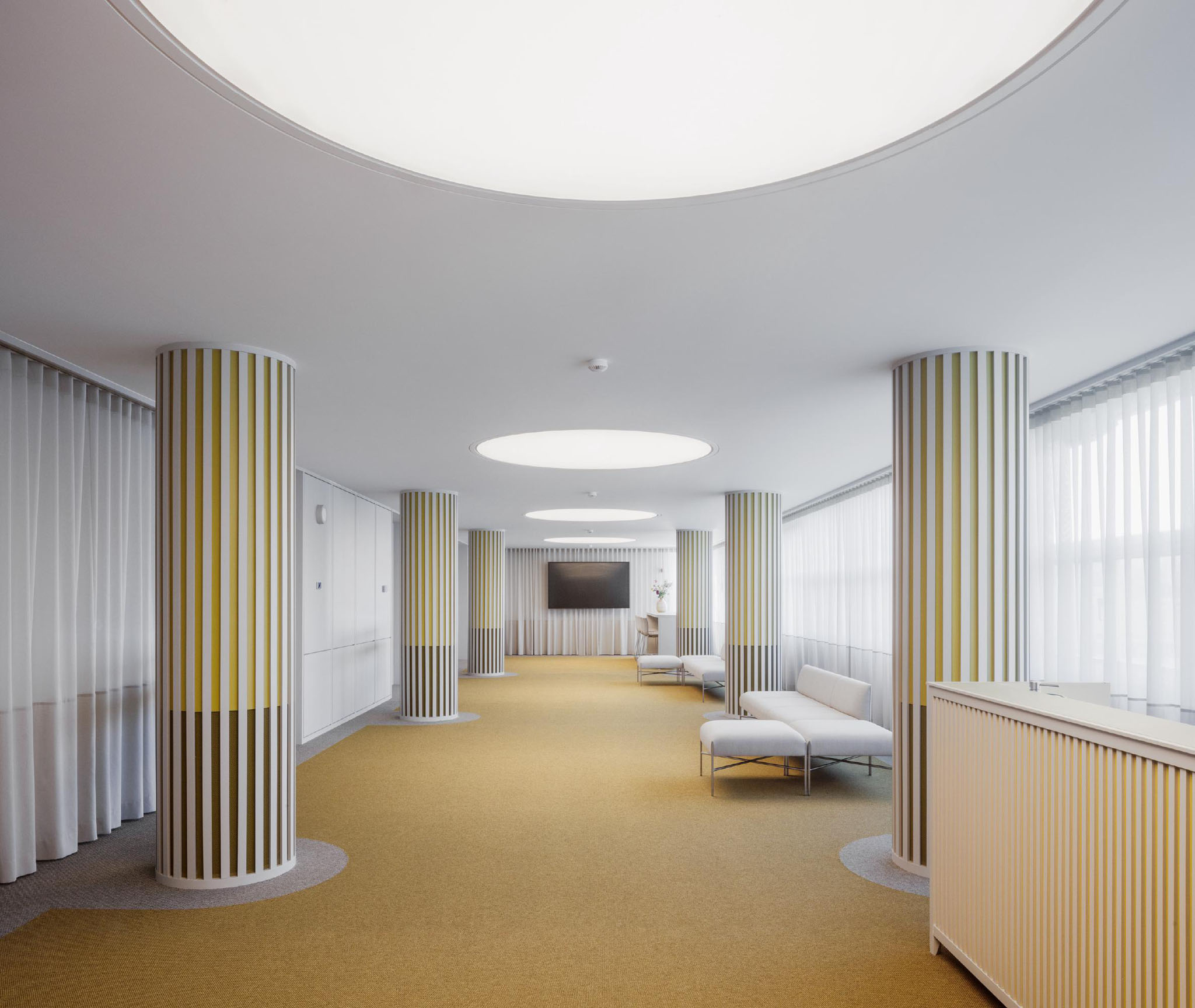
Dutch Upper House and Council of State by Happel Cornelisse Verhoeven. Photograph by Karin Borghouts.
The extension on Kazernestraat was completely worn out after thirty years of intensive use. On the other hand, the building’s generic column structure and generous dimensions were able to accommodate all of the Upper House’s public functions, such as the reception area, dining room, Hall and various committee rooms, as well as the substantial Chamber, with relative ease. A new interpretation of the staging of ceremonial functions in the Binnenhof has resulted in a respectful, stylized invocation of the traditions, rituals and symbols associated with the legislative tasks of the Upper House in its new premises.
Thus the quadrilateral typology of the Chamber calls to mind the historical chamber in the Binnenhof, albeit rescaled to 70% of the original. The democratic arena is also organized according to the same parliamentary configuration in which the senators’ benches are arranged symmetrically around the spatial axis of the ministers’ and chairman’s tables. A polychromatic artwork by Navid Nuur – a shimmering, 12-fold composition that changes colour rhythmically depending on one’s viewpoint in the chamber – accentuates the centre of the space.
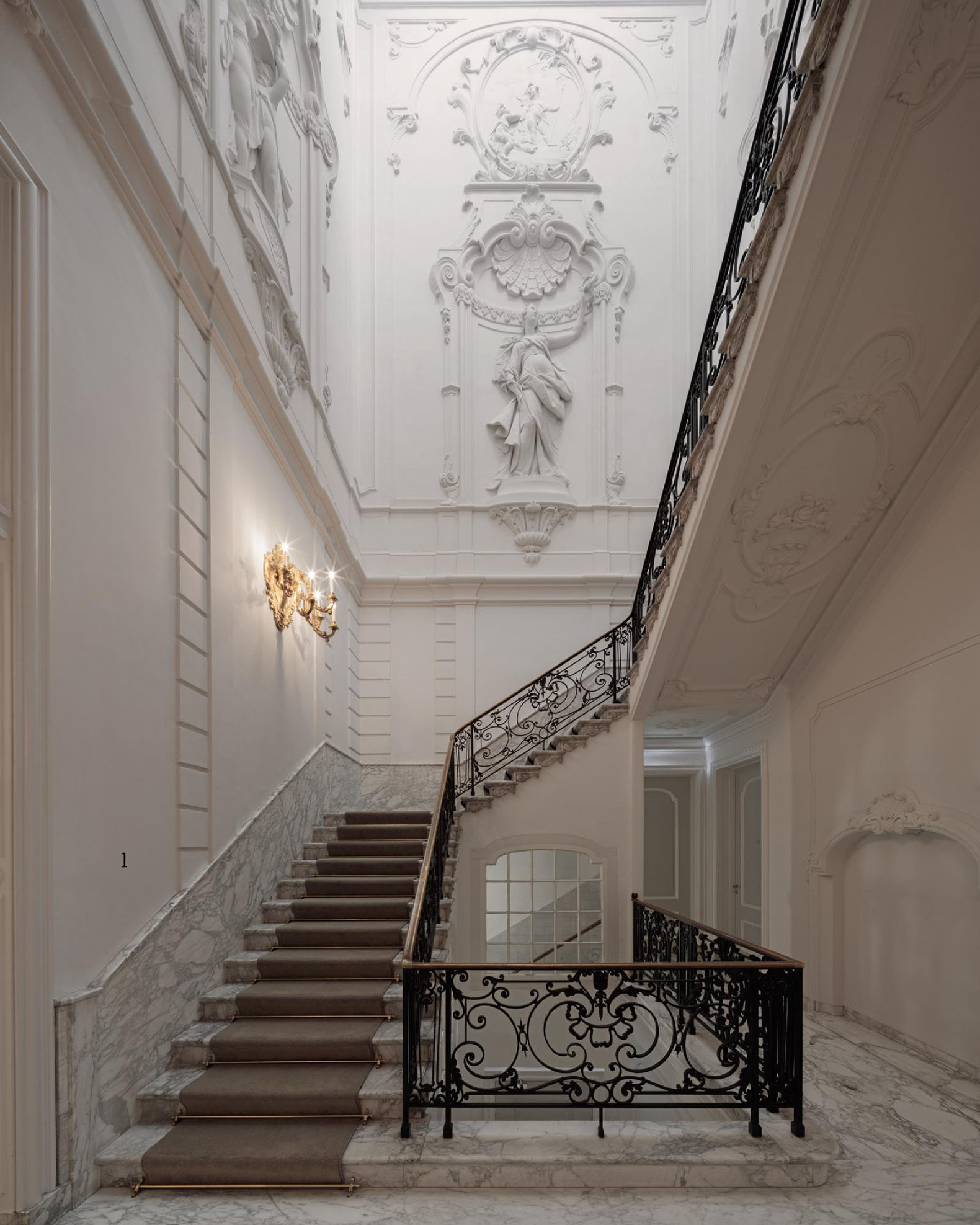
Dutch Upper House and Council of State by Happel Cornelisse Verhoeven. Photograph by Karin Borghouts.
To reinforce the internal unity between the heritage building and the extension, a new "lining" was devised for all the rooms in the 1980s building, effectively making them modern "period rooms". Timber panelling, curtains, carpets and an architectural ceiling together create a classic modern atmosphere; the lining was kept strategically separate from the existing structure so that the resulting cavity could accommodate all the modern-day mechanical installations. The chosen materials and colours were carefully coordinated with the opaque, white-grey colours of the heritage building. Floor and wall coverings and curtains are from standard ranges and consist, where possible, of recycled products. The interior and the loose fittings are mostly made from laminated furniture boards and (leftover) timber boards and were designed as simple assembly kits prepared in the factory. Items of furniture, like tables and benches, are not assembled with solid timber elements; rather all the table partitions, table tops and wall elements were milled in a single piece, including the edge profiles, in order to suggest hand-crafted detailing.
Conceived as a Semperian cladding, the design uses simple means in an attempt to realize a dignified setting that respects the notion of the Upper House as a "Chambre de Réflexion". A fitting decor is reminiscent of the Binnenhof in which rituals, conventions and symbolism lend weight to the procedures and protocols of the parliamentary institution.
After the comprehensive renovation of the Binnenhof, the Senate will move back to its old place. One of the future scenarios is that the temporary accommodation will continue to be used as a meeting centre for various ministries in The Hague.
